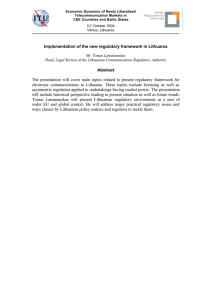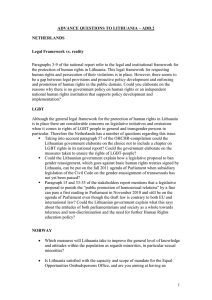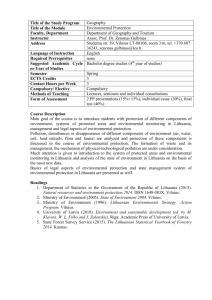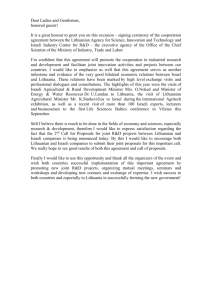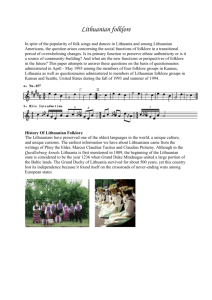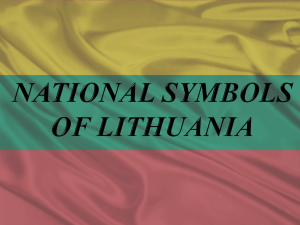The 2010 Joint Study by the Human Rights Council special... practices in relation to secret detention in the context of... ADVANCE QUESTIONS TO LITHUANIA – ADD.3
advertisement
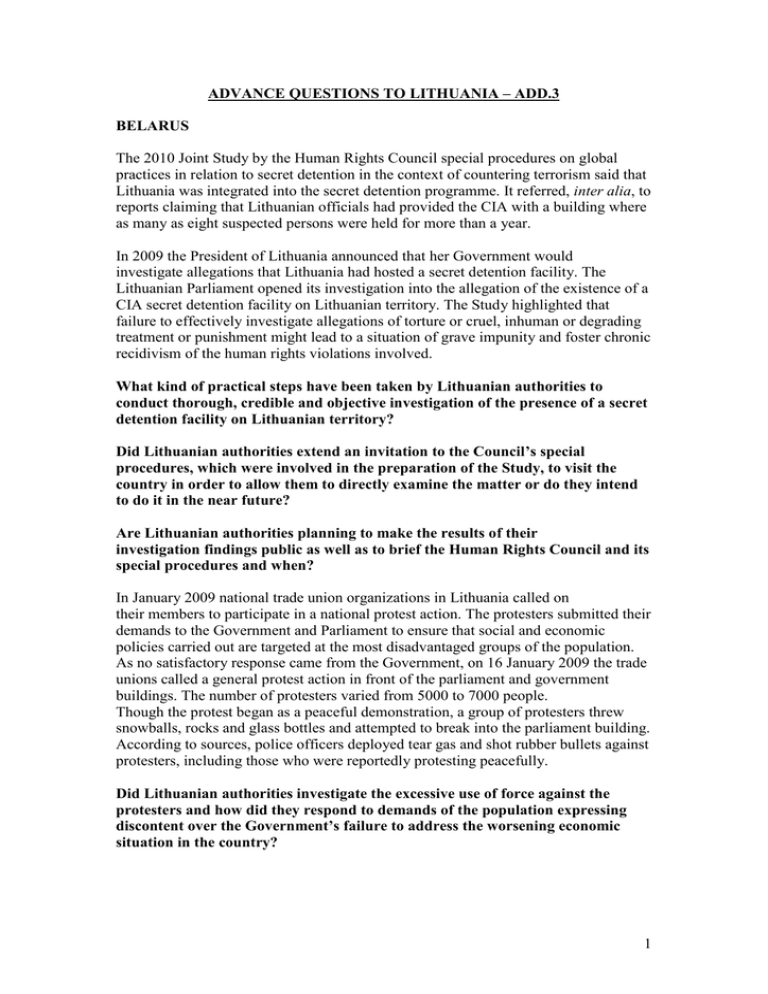
ADVANCE QUESTIONS TO LITHUANIA – ADD.3 BELARUS The 2010 Joint Study by the Human Rights Council special procedures on global practices in relation to secret detention in the context of countering terrorism said that Lithuania was integrated into the secret detention programme. It referred, inter alia, to reports claiming that Lithuanian officials had provided the CIA with a building where as many as eight suspected persons were held for more than a year. In 2009 the President of Lithuania announced that her Government would investigate allegations that Lithuania had hosted a secret detention facility. The Lithuanian Parliament opened its investigation into the allegation of the existence of a CIA secret detention facility on Lithuanian territory. The Study highlighted that failure to effectively investigate allegations of torture or cruel, inhuman or degrading treatment or punishment might lead to a situation of grave impunity and foster chronic recidivism of the human rights violations involved. What kind of practical steps have been taken by Lithuanian authorities to conduct thorough, credible and objective investigation of the presence of a secret detention facility on Lithuanian territory? Did Lithuanian authorities extend an invitation to the Council’s special procedures, which were involved in the preparation of the Study, to visit the country in order to allow them to directly examine the matter or do they intend to do it in the near future? Are Lithuanian authorities planning to make the results of their investigation findings public as well as to brief the Human Rights Council and its special procedures and when? In January 2009 national trade union organizations in Lithuania called on their members to participate in a national protest action. The protesters submitted their demands to the Government and Parliament to ensure that social and economic policies carried out are targeted at the most disadvantaged groups of the population. As no satisfactory response came from the Government, on 16 January 2009 the trade unions called a general protest action in front of the parliament and government buildings. The number of protesters varied from 5000 to 7000 people. Though the protest began as a peaceful demonstration, a group of protesters threw snowballs, rocks and glass bottles and attempted to break into the parliament building. According to sources, police officers deployed tear gas and shot rubber bullets against protesters, including those who were reportedly protesting peacefully. Did Lithuanian authorities investigate the excessive use of force against the protesters and how did they respond to demands of the population expressing discontent over the Government’s failure to address the worsening economic situation in the country? 1 SWEDEN Sweden would like to ask the Government of Lithuania what measures that can and will be taken to further strengthen the rights of LGBT persons in Lithuania. How can the Law on the Protection of Minors against the Detrimental Effect of Public Information be refined to avoid discrimination of these persons? Sweden would also like to ask the Government of Lithuania to elaborate on the status of the proposed amendments to the Code of Administrative Violations for despising moral values that are to be discussed in the Parliament during the autumn session. How does Lithuania plan to improve the human rights situation in the country’s prisons? The 2008-2010 Programme of Roma Integration into Lithuanian Society, which received only limited funding during its implementation period, is now obsolete. When does the Government of Lithuania plan to present a new, and solidly financed, programme for the integration of the Roma community? 2
